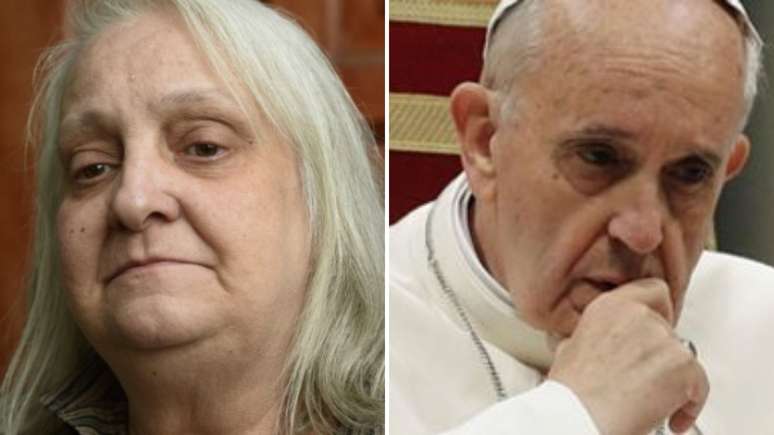Sunday party in Grajaú, south of Sao Paulo, returns to face-to-face meetings after two-year hiatus in the pandemic
-skms7huirwon.jpg)
The plastic ball was zigzagged by the flip-flop feet at the start of Rua Manoel Guilherme dos Reis, on the outskirts of the southern city of São Paulo. Other guys tried to find the best position to fly a kite on that frosty sunny afternoon as a car or motorcycle slowly passed waving goodbye.
Seu Moacir Santos, 52, was already announcing that Boteco do Feijão was ready for anyone who wanted to arrive by lifting a tarp and holding a sign with the prices of the drinks. “From Monday to Saturday I work in my shop and, on Sundays, I have been coming here since Family 27 invited me to join because people here in Grajaú already know us,” he says, wearing a cap embroidered with P27, next to his wife Jacilene Gonçalves, 42, born and raised in the neighborhood.
-1jydrfgjvuvkx.jpg)
The weekend was not in a park, but in the street which, before it had a name, was known for its number, 27, and its violence. “In the 90s the whole suburb was violent, but this street was particularly dangerous, remember those who are older than Grajaú, it was a matter of death, murder, brawl between one of the back streets and another here”, recalls the musician Jefferson Santiago, 40 years old.
“Not only here, in the 90s he died every weekend,” adds musician Nenen Partideiro, 49. Both are part of the Pagode da 27, a samba club that has been held there on Sundays since 2005 and also works with social projects in the Grajaú region. Last year the initiative received a plaque from the Memória Paulistana project, from the Municipal Department of Culture, for its historical value.
The turning point was the occupation of the road. “We met playing in other samba clubs, in a bar over there, and when it didn’t happen in other places, we played at 27 and stayed,” explains Jefferson, who has lived in the neighborhood since he was 12 and plays percussion. . “We end up playing the role that the government does not have, because there is violence only because the state is absent,” adds Nenen, whose son has gone from being a spectator of the roda as a child to playing among the musicians.
-1if12p0afgzzq.jpg)
The meeting of the group of about 10 Sambists takes place around a rectangular table, wrapped in a red and white checked tablecloth, colors that are both on the members’ clothes and on the canvas that protects the wheel and on the walls of the bar and library that is next to. In the center of the table, a vase with the sword of St. George acts as a protective shield. “The colors are red for love and white for peace that we seek for our community, out of respect for samba because we see it as a power, we reach places we never imagined to reach,” explains Jefferson. “Samba has come to connect people and save lives,” smiles Nenen.
Music director, composer and musician Ricardo Rabelo, 47, is one of them. “I can say I had everything to go wrong and it was the samba that saved me,” he says. One of the founders of the club, like Jefferson and Nenen, says the goal is to try to set good examples for young people.
“I have family members, people who lived with me, who went to the side of crime, but the music took me and it didn’t take me there, so I started listening, I started studying, I started playing, I got interested in music and started attending samba clubs. I was actually saved, “he says.” What I do is be a multiplier of culture, of art, because when we started we thought ‘let’s use samba as a tool for social transformation’. If samba has saved me, it can also save others. people.
The roda also had this impact on the life of Leandro Carvalhal, 28, one of the youngest members of the Pagode for 27, who took cavaquinho into the group in 2019 but started dating at the age of 16. “My father, my mother has always loved samba, Martinho da Vila, and as a boy, with that desire to be a footballer, he invited me to go and said ‘no, let’s learn an instrument, let’s try to study'”, remember him.
“I used to come with him every Sunday and while I was studying, the ‘will I ever sit there?’ I graduated from the EMESP Conservatory (School of Music of the State of Sao Paulo), I graduated in music and today the vision I had then that I am realizing here with them is a gratitude that I will never forget ”.
But the group’s initiative did not catch on easily. “At the beginning we had some resistance from the residents because they thought it was going to be a samba club where there would be fights, there would be violence, it would end and they didn’t want to participate,” Rabelo recalls.
Therefore, they had to gradually gain the trust not only of the local population, but also of the public authorities. “We chased everyone imaginable, the resident, the guy with the tip, the police, because we wanted to carry out the project without violence, without drugs, so much so that, if someone comes here for the first time and turns on a ‘in base’, let’s stop the samba and say ‘look, not here’, because the children come too and that’s why we are able to bring families together, ”he says.
-qxyxh74avuch.jpg)
In addition, the 27-year Pagode asks for donations of non-perishable food during events to go to the most vulnerable families in the community and encourages reading. “One thing that brought the residents closer to us was also the literature. When we started taking books to children’s homes and, after a month, we go there to discuss and see what they had found and to leave a new book, we automatically managed to bring the family closer to samba because, like it or not, every musical movement inside the hood he is always very marginalized ”, explains Rabelo.
Jefferson points out that the two universes are complementary. “If you take the history of samba, a lot of social and environmental issues are raised, that’s all in the lyrics, the lyrics bring a lot of questions to think about and study,” he explains. “And also to bring this self-esteem to the resident of the community, that there is a strong cultural center in the courtyard of their village, he comes, he likes it, he calls someone else he doesn’t know”.
That’s what General Services Director Simone de Souza, 58, did when she called her maid of honor to enjoy the sound for the first time. With a broad smile and a can of beer in his hand, he says he has lived in Grajaú for 20 years. “I always come, my children come, my grandchildren come, it’s wonderful!”, She says, all excited.
For Silvana Neves, 35, who works with jewelry and left the city of Diadema, in the ABC region of Sao Paulo, Simone’s publicity was good. “I came to meet him and I’m having fun, he is very excited”, she smiles at her. She took her seven-year-old daughter Yasmin to accompany her, who was coloring drawings with other children in the library space at a table with children’s chairs. “It was a surprise [saber da biblioteca] because, like it or not, it’s a space that has been given to parents to have fun and their children to have fun with us, so they don’t get discouraged or hyperactive and I can get away from the hustle and bustle of everyday life, ”he points out.
-trqtkh2trk8p.jpg)
But the relaxed vibe returned to Rua Manoel Guilherme dos Reis not long ago. The June 12 samba club was only the fourth held in 2022, after the Pagode hadn’t performed for two years for two years due to the Covid-19 pandemic. “Thank God, we have all the musicians here, strong, and we were able to secure the foundation for the family,” says Nenen, who works in a delivery and logistics company.
“We stopped, but the social part continued,” completes Jefferson. “So, we donated a lot of basic food baskets, we collaborated with Ecoativa [centro eco-cultural localizado na Ilha do Bororé] which brought organic food. The strongest was the distribution of the baskets, we also kept two lives for food preservation “.
According to him, the project to bring books to the homes of families with children also continued. “If it had been for the public, we would have come back. [com a roda de samba na rua] It has been a while, but we have waited at least for the release of the masks to feel safer, ”he points out.
It was during this return period, in May 2022, that the group reopened the renovated library after winning a public notice from the city of São Paulo and also inaugurated Casa 27, which is located on Rua Pedro Starbulov and about 500 meters from Rua that started the Pagode route.
-vf9p82dpz585.jpg)
“After 17 years we have this house,” says Rabelo proudly. And they want to go further. “We are waiting for the answer to activate a project to teach children to build their own instrument,” he explains. “I’ll be the workshop and the kid who builds his instrument. Leandro will enter as a teacher to teach playing. Consequently, the child, learning the basics, becomes part of the 27th cavaco orchestra, which will be our final product, and we want to reach 70 children, all from Grajaú ”.
And it is not difficult to see some boys and girls playing during the roda, some even trying to create a melody with the instruments of the group. The adults, on the other hand, led the choir in the repertoire, which ranges from the group’s original pieces to famous pieces such as “Coração em Desalinho”, by the sambist Monarco, who died in 2021.
Between the grill and the steps back and forth, not even the 13 degrees of a cold Sunday evening kept the audience away. “This is what the pagode is: it is a gathering of friends who make a samba. In the end it is the same, it is music ”, concludes Nenen Partideiro. “If you want to wash your soul to start on Monday, you have to go through the 27th”.
-qxlju3cddl5x.jpg)
Service:
Pagoda from 27
Where: Rua Manuel Guilherme dos Reis, 533, Parque Grajaú – São Paulo, SP.
When: every Sunday from 16:00 to 20:00.
To know more: @ pagodeda27 on social networks
Source: Terra
Emily Jhon is a product and service reviewer at Gossipify, known for her honest evaluations and thorough analysis. With a background in marketing and consumer research, she offers valuable insights to readers. She has been writing for Gossipify for several years and has a degree in Marketing and Consumer Research from the University of Oxford.








